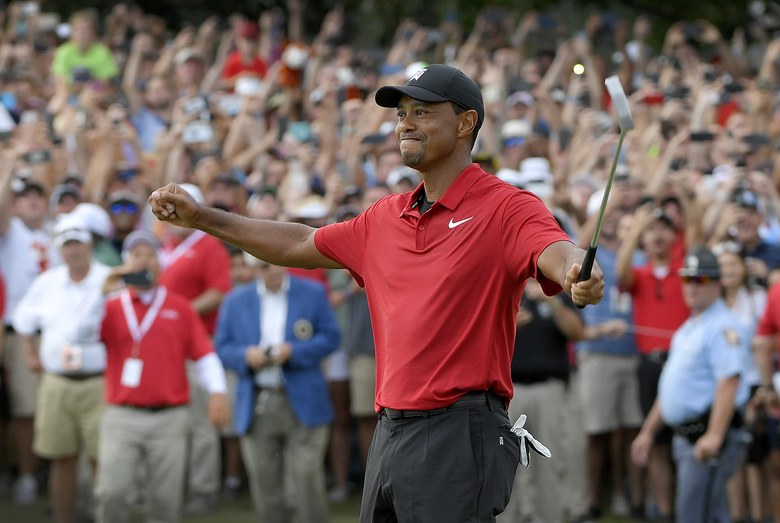Counting down our top 25 players, events and moments of the past 12 months
It’s an annual tradition at Golf World. Our “Newsmakers of the Year” package has helped cap the year in golf now for more than two decades. From our former print magazine to our current digital publication, readers have been treated to a thoughtful review of the previous 12 months, our writers returning to the players, events and moments that helped define our sport in hopes of offering a hearty encore to the season. During the next two weeks, we’ll continue the tradition by unveiling the top 25 Newsmakers of 2018—Nos. 25 to 11 from Dec. 3-7 and Nos. 10 to 1 from Dec. 10-14. There will be a few no brainers—spoiler alert: U.S. Open and PGA champion Brooks Koepka makes our list—but also some storylines that are less obvious but, we think, no less worthy of our collective appreciation. So come back each day to see who makes our list as we countdown to our No. 1 Newsmaker of 2018. —Ryan Herrington
[divider] [/divider]
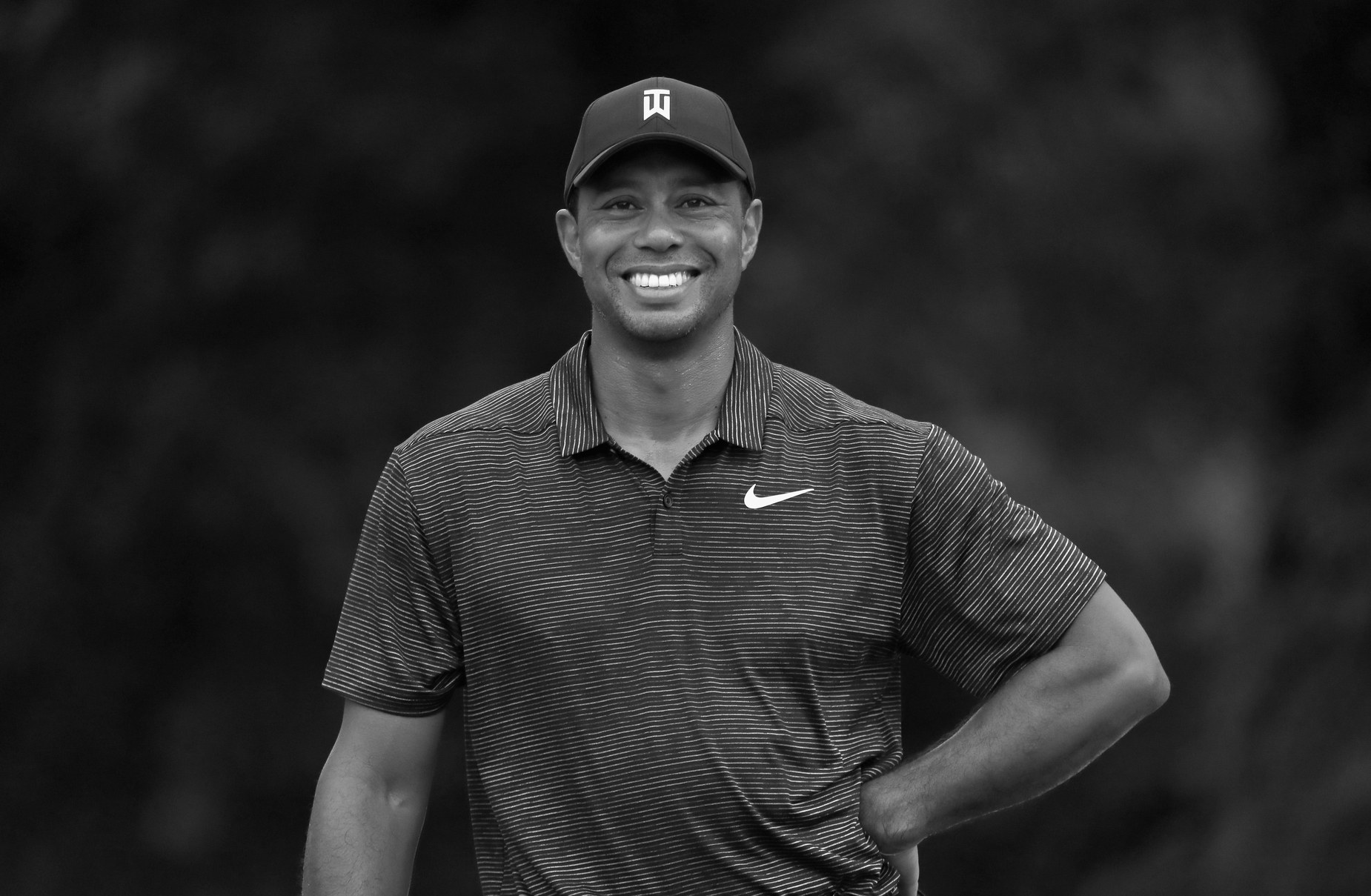
Andrew Redington/Getty Images
No. 1: Tiger Woods
For all of Tiger Woods’ historic accomplishments in a professional career that has spanned more than two decades, 2018 was a year unlike any other for the 14-time major champion. And one of his most memorable.
Yes, there was his first win in five years—a span of more than 1,800 days—as well as other significant moments of varying degree, from boasting the second-highest swing speed on the PGA Tour (129.2 mph), to contending in multiple major championships, to climbing from 656th to 14th in the World Ranking. But there was also something different about Woods himself.
Working on a feature about Woods in March one quote from the reporting stood out: “There’s a lightness around him now, whereas there used to be a heaviness around him,” a source close to Tiger expressed. The image that accompanied the piece featured eight individual photos of Woods smiling, and there were plenty more to choose from.
To understand Woods’ climb back, you have to understand how far into the abyss he’d fallen. In the summer of 2016, Woods was recovering from two back surgeries the previous fall. He’d become a ghost around town in West Palm Beach, and there was darker speculation about painkillers. Then came the ugly and disturbing dash-cam video of Woods from his arrested on suspicion of DUI on Memorial Day weekend 2017.
It was no longer about golf for Tiger, it was about life. He checked into a rehab facility, as he put it, to better manage his medication for sleep and pain. The move seemed to have a profound impact in the eyes of many. “In rehab you don’t just sit there locked in a room where you can’t take pills,” his former coach Hank Haney said. “You actually talk to people. When you get underneath the hood, something’s changed.”
The golf? That came around, too. Once Woods was healthy—mentally and physically—he just needed time. Three starts into 2018, it was fairly obvious he hadn’t forgotten how to play and play well.
At the Honda Classic in February, Woods flirted with contention but was undone by too much water, wind and rust. Had he played PGA National’s difficult Bear Trap, Nos. 15 through 17, in even par for the week and not eight over he would have landed in a playoff, instead of finishing 12th.
Two weeks later at the Valspar Championship, Woods entered the final round a stroke off the lead. Needing birdie on the last at Innisbrook, he curiously elected to take iron off the tee on the long par-4 18th instead of driver. His par left him one back of Paul Casey.
A week later at Bay Hill, a place Woods has won eight times, he charged into contention on Sunday and while he probably wasn’t going to keep pace with a red-hot Rory McIlroy, indecision and a driver yoked out of bounds on the 16th hole ensured it.
He continued progressing, though, and with nine holes to play in the Open Championship at Carnoustie he was in the lead—until a double bogey on the 11th and a bogey on the 12th knocked him from contention. A month later at the PGA Championship at Hazeltine, Woods played well most of the week and closed with a 64, but it wasn’t enough to match Brooks Koepka’s scorching pace and Woods finished in second two shot back.
Then it happened. On the final week of the season, against a field of 29 other players at the Tour Championship, it all clicked. Adam Scott once said that what separated Woods from everyone else wasn’t so much all those highlight-reel shots but that his bad golf was better than everyone else’s. At East Lake, Woods demonstrated both, and the result was a two-stroke victory for PGA Tour win No. 80, with a scene coming down the last that looked more religious revival than golf tournament. It was appropriate given the journey.
“It means a lot,” an emotional Woods said afterward. “The people who are close to me saw the struggles and what I was going through, and some of the players that I’m pretty close to, they’ve really helped throughout this process and the last few years. Their support and some of those things that they said coming off that last green meant a lot to me.”
Woods will never be the same dominant player he was in his 20s and 30s, but he’s also not the same person, either. There’s no way he could be given all he’s gone through.
What does all of it mean for 2019?
For now, Woods is healthy and there remains that lightness around him. And it turns out he’s still pretty good at golf, too. —Brian Wacker
[divider] [/divider]

David Cannon/Getty Images
No. 2: Brooks Koepka
Brooks Koepka ended his very good, chip-on-his-shoulder-fueled year by proving he can win a small one. Which was big. Koepka’s October victory in the CJ Cup at Nine Bridges in South Korea was his third PGA Tour title in 2018, and it propelled him for the first time to No. 1 in the world, making official what had become evident—that he was the game’s top player. By then, of course, he already had cashed in that chip for one of the more history-laden seasons in recent memory. It began in June when Koepka proved his victory in the 2017 U.S. Open at docile Erin Hills was no fluke. On the famously forbidding tapestry of Shinnecock Hills in Southampton, N.Y., Koepka was steady and his game was sturdy, and he beat then-No. 1 Dustin Johnson head to head to successfully defend his title, only the seventh man to do it and the first in 29 years. Two months later, the 28-year-old Floridian won his third career major by holding off a surging Tiger Woods to capture the PGA Championship at Bellerive Country Club in St. Louis. Only four others have won those two championships in the same year: Gene Sarazen, Ben Hogan, Jack Nicklaus and Woods. Not to be forgotten is that Koepka, who owns five PGA Tour titles, accomplished all this after missing nine weeks, including the Masters, with a wrist injury. “When I look at what I’ve done in the past two months, it’s incredible,” said Koepka, who, predictably, was voted by his peers PGA Tour Player of the Year. “Three majors at 28, it’s a cool feeling. It really is.” —Dave Shedloski
[divider] [/divider]

Andrew Redington/Getty Images
No. 3: The Ryder Cup
The Ryder Cup continues to grow more outrageous and sensational with each passing match, and 2018 was no exception. Heading into the three days at Le Golf National, a narrative had been pre-written: This would be the first American victory on European soil in 25 years. It would consolidate all the reforms that began with Phil Mickelson’s Revolt at Gleneagles in 2014 and continued through Davis Love III’s excellent stewardship of the victorious U.S. team at Hazeltine National in 2016. It would prove, at last, that the Americans had an answer to Europe’s infamous “template” and that their shiny new system could break decades of European dominance. But that … did not happen. And it didn’t just not happen, if you’ll pardon the confusing verbiage. It didn’t not happen in an epic not happen kind of way. Europe won—by a lot. Francesco Molinari became only the second man—and first European—to win five points in five sessions. The “Moliwood” tandem was everything the (nonexistent) Patrick Reed-Jordan Spieth pairing was supposed to be, and the European old guard passed every test with flying colors. Meanwhile the on-course heroics don’t begin to tell the full story. Leo Tolstoy led Anna Karenina by writing “all happy families are alike; each unhappy family is unhappy in its own way.” After the rout at Paris, the American dysfunction was similarly multi-faceted. There was Reed, who attempted to pull off a Mickelson mutiny of his own only to succeed in making more people dislike him. There was the mysterious Brooks Koepka-Dustin Johnson feud, and the wild, wild rumours accompanying it. There was a worn out Tiger Woods sulking around the course, and there was Phil blundering his way right behind. Above all, there was the distinct sense of flailing incompetence that accompanies every foreign Ryder Cup … and just when the memory had begun to wear off, Ian Poulter came through with the troll of the year. In short: Bring on Whistling Straits! —Shane Ryan
[divider] [/divider]

Rob Carr/Getty Images
No. 4: Saturday at Shinnecock
Through two rounds of the 118th U.S. Open, the USGA and its leader, Mike Davis, had the championship they wanted. The event’s long-held ethos, the integrity of par, was intact, Dustin Johnson the lone competitor in red figures at Shinnecock Hills. Better yet, in spite of the high scores, players generally agreed the historic Southampton, N.Y., course was a fair test. And then Saturday beckoned. Davis and his team misjudged the forecast, not expecting the wind that swept the eastern end of Long Island that afternoon. Pin positions, particularly on the 13th and 15th holes, were unreasonably harsh, the greens struggling to hold approach shots—and in a few cases, putts. The carnage: 19 players shot 78 or higher, with the final two groups finishing a collective 31 over par. It was a set-up that caused Phil Mickelson to crack, the image of him frustratingly hitting a moving golf ball becoming the distressing takeaway. “They lost the golf course,” said Zach Johnson, a respected voice not prone to hyperbole. The assessment was one Davis ultimately conceded. “We want the U.S. Open to be tough, but this afternoon was too tough,” said Davis, in his 13th year as the main set-up man. “It was a tale of two courses.” The gaffe was embarrassing in itself, especially considering the set-up issues suffered the last time the Open came to Shinnecock in 2004. The course was considerably slowed down for Sunday—Tommy Fleetwood shot a final-round 63 in the far more playable conditions—and it did not unnecessarily interfere in the proceedings as Brooks Koepka outlasted Fleetwood by a stroke to defended his title. But the damage was already done. The USGA’s most high-profile mistake at an Open, the one they spent years profusely apologizing for and promising would not happen again … happened again. —Joel Beall
[divider] [/divider]
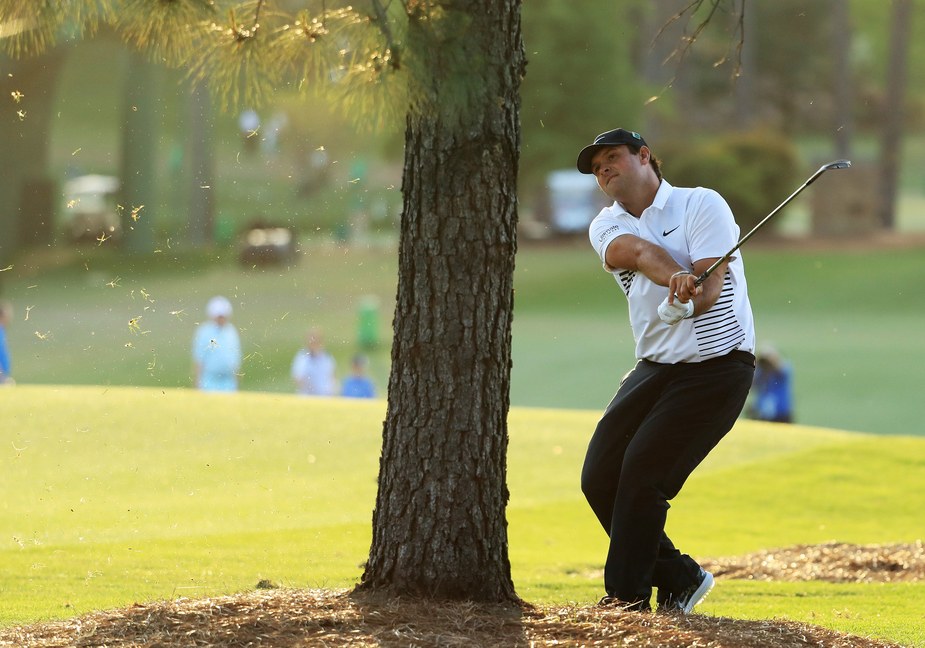
Andrew Redington/Getty Images
No. 5: Patrick Reed
You win the Masters and the rest of your year is usually all rainbows and cotton candy. Yet Patrick Reed, as often seems to be the case, was the exception to the rule. Less than six months after the biggest win of his professional career, the 28-year-old was reeling from a series of verbal gaffes and social missteps. Outrage over the quality of free Red Sox tickets during the PGA Tour stop outside Boston and calling out a TV cameraman at a European Tour event did little to engender support from fans. But where Reed swerved into restricted airspace was when he called out Jordan Spieth and the U.S. Ryder Cup hierarchy after Europe’s trouncing of the Americans at Le Golf National. “The issue’s obviously with Jordan not wanting to play with me,” Reed told The New York Times when asked about splitting up the previously successful pairing, before also lobbing this bon mot: “For somebody as successful in the Ryder Cup as I am, I don’t think it’s smart to sit me twice.” Few question Reed’s golf game—he had five PGA Tour wins prior to claiming the green jacket by one stroke over Rickie Fowler—but the typical Augusta National halo never materialized. It didn’t help that he beat fan favorites in Fowler, Spieth and Rory McIlroy, the Northern Irishman’s appeal swelled by the chance to complete the career Grand Slam. Yet Reed’s caustic demeanorcontinues to rub many the wrong way. To his credit, his game didn’t suffer a post-Masters swoon like Sergio Garcia in 2017; in his next 14 PGA Tour starts, Reed missed just two cuts and posted four top-10s, including fourth place at the U.S. Open. The competitor in Reed is alive and well. So, at times, is the villain. —Ryan Herrington
BONUS READ: → Has Patrick Reed burned too many bridges on the PGA Tour?
[divider] [/divider]
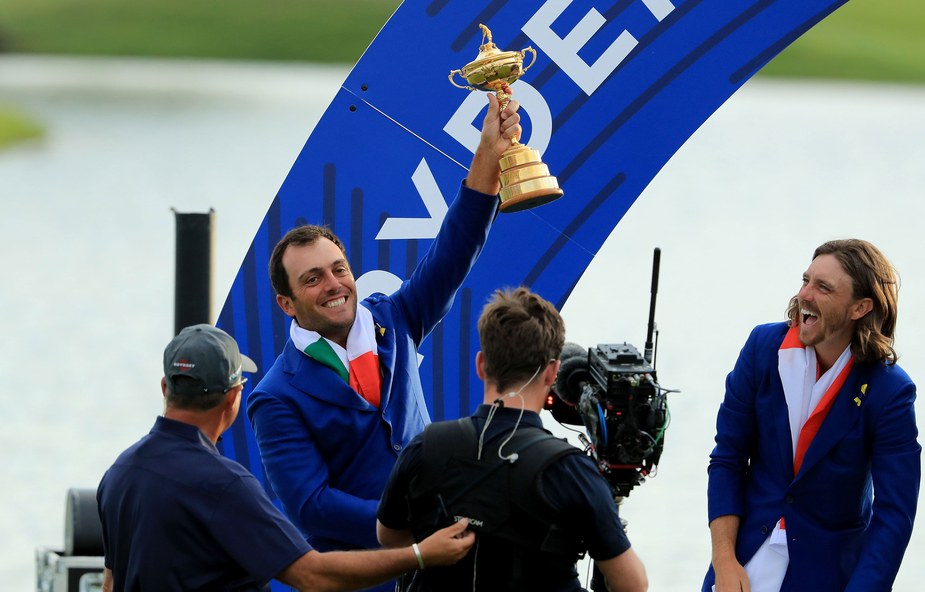
David Cannon/Getty Images
No. 6: Francesco Molinari
From the tee. On the greens. Between the ears. At home in Europe. Across the pond. Everywhere and in every way, Francesco Molinari was a better golfer in 2018. Facing down Rory McIlroy in the final round, the 36-year-old Italian won the BMW PGA Championship at Wentworth, the biggest regular event on the European Tour. A maiden victory on the PGA Tour (by eight shots) followed not long after at the Quicken Loans National. Another week later, he finished runner-up at the John Deere Classic. And seven days after that, Italy’s drought in majors had ended. The Turin-native was Open champion, a two-stroke winner at Carnoustie. Not done with record-breaking, Molinari became the first European to claim five wins out of five matches in the Old World’s Ryder Cup romp. Not surprisingly, he topped the Euro Tour money list, the “Race to Dubai.” All of which was not achieved alone. The previously pesky Molinari’s putting improved under the tutelage of coach Phil Kenyon. Strength and conditioning is handled by Dave Alred. Fitness is Rob Goldrup’s department. And fine-tuning the famously metronomic Molinari swing is long-time coach Denis Pugh’s area of expertise. Throw in Ryder Cup partner Tommy Fleetwood and “Team Molinari” is one of 2018’s biggest success stories. Ferrari eat your heart out. —John Huggan
[divider] [/divider]

Glyn Kirk/AFP
No. 7: Phil Mickelson
Sure, there were bigger stories in golf, but if we based our Newsmakers ranking simply by the amount of news generated in 2018, Phil Mickelson inarguably would be at the top of the list. There’s no way to put a tidy bow on his season when you consider: A) Mickelson ended a nearly five-year victory drought in March at the WGC-Mexico Championship; B) played his first Masters practice round with Tiger Woods in 20 years, C) while debuting a new long-sleeved golf/dress shirt, D) for which later in the year he cut a commercial featuring various dance moves, including the worm; E) ran after and hit his ball while it was still moving on the 13th green at Shinnecock Hills in the third round of the U.S. Open; F) left reporters incredulous by his explanation of said violation; G) performed a high kick over the head of actor Chris O’Donnell that marked his third viral social media hit (after the moving ball incident and the dance commercial; H) suffered a summer slump that I) leaked into the Ryder Cup where J) he lost the deciding match to Francesco Molinari; K) but then he roared back to life to win $9 million in a celebrated first-of-its kind, pay-per-view match against longtime rival Woods in Las Vegas. Whew. Only Mickelson could weather a year like Mickelson had. There was one other item. The week after his victory over Woods, Mickelson celebrated 25 consecutive years in the top 50 in the Official World Golf Ranking. Amid the ongoing uncertainty of what Phil will do next, one sure thing has been his consistent excellence with a golf club. —Dave Shedloski
[divider] [/divider]

Streeter Lecka/Getty Images
No. 8: The Year of the Comeback
As the saying goes, America loves a comeback story. If that’s true, professional golf gave fans its fill of redemption tales and then some in 2018, a season that culminated with the biggest comeback story of all when Tiger Woods captured his 80th career PGA Tour victory at the Tour Championship, nearly five years after his last title. But Woods’ story had competition, starting with Bubba Watson, who had considered retirement in 2017. He picked up his first victory in nearly two years at Riviera, and added two more by season’s end. Ian Poulter, who thought he might lose his card in 2017, ended a near six-year win drought at the Houston Open. A month later, Webb Simpson lit TPC Sawgrass on fire en route to his first W in more than five years. Kevin Na ended an almost seven-year drought with a win at Greenbrier, only the second of his career. Just as the comeback basket was full to the brim, fellow countrymen Lee Westwood and Danny Willett ended emotional droughts of their own back-to-back on the European Tour, as did Matt Kucharand Charles Howell III (with his happy family above), in the same two weeks on the PGA Tour. At this rate, it would be surprising if Luke Donald, Hunter Mahan and Geoff Ogilvy all don’t pick up comeback victories in 2019. —Christopher Powers
[divider] [/divider]
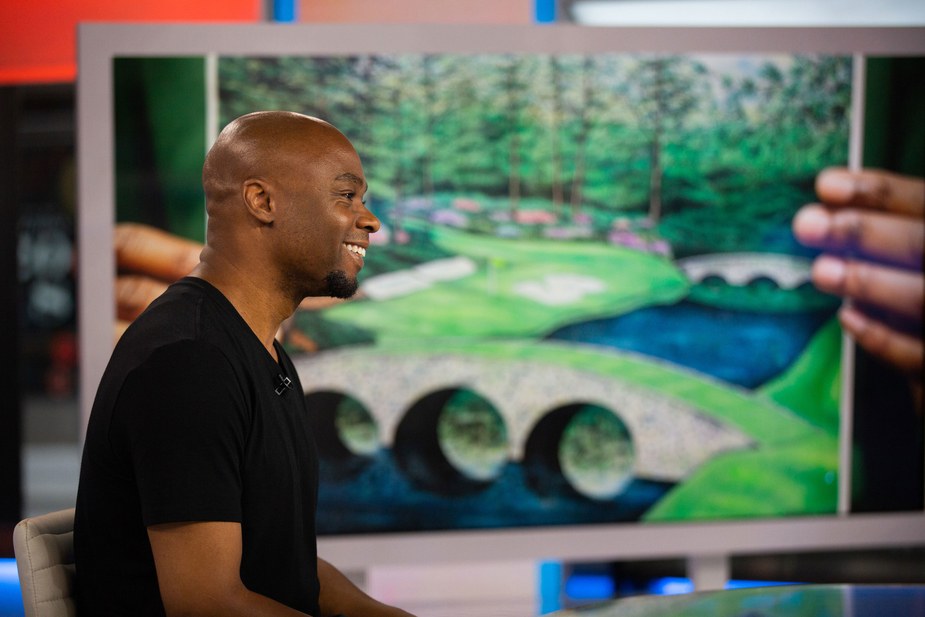
Nathan Congleton/NBC/NBCU Photo Bank via Getty Images
No. 9: Valentino Dixon
Any time a long-standing murder conviction is overturned, it’s major news. But the story of artist Valentino Dixon was extra compelling for the unlikely way it came about. Dixon had been locked inside Attica Correctional Facility for nearly two decades when the superintendent, a recreational golfer named James Conway, asked the inmate to draw a picture of Augusta National’s 12th hole as a favour. Raised in a tough neighborhood of Buffalo, Dixon had never set foot on a golf course, but the tranquil look of the grass and trees he found appealing. So he started drawing more golf-scapes, using a neighboring cellmate’s back-issues of Golf Digest as reference material. Therapeutic as it may have been to lose himself in long hours creating Edenic images, Dixon believed his art also had a purpose: to be so beautiful so as to catch the attention of someone who would believe his claim of innocence. It worked. He shared his art with Golf Digest, which then in 2012 produced the first national expose of the miscarriage of justice against him. This sparked more media attention, notably a poignant 2013 television program by Golf Channel. A group of undergraduates from Georgetown University applied further pressure with key findings from their investigation. Finally, on Sept. 19, Dixon walked free after 27 years in prison. With his mind, body and spirit intact, the 49-year-old plans to make a life selling art and advocating against mass incarceration. —Max Adler
[divider] [/divider]

Drew Hallowell/Getty Images
No. 10: Ariya Jutanugarn
It’s been nearly 10 years since the LPGA has had a single, dominant star. That’s not to say the tour has lacked the talent to entertain, but since Lorena Ochoa retired in 2010, the question has lingered: Who will be the next to win with Lorena’s consistency and apparent ease, or take command of the winner’s circle with the unapologetic confidence of Annika Sorenstam before her? In 2018, we got a clearer view than ever of who that may be. Thailand’s Ariya Jutanugarn recorded top-10 finishes 17 times in 2018—including three wins. At the end of the season, Jutanugarn had won every award available to her: Player of the Year, money leader, the new Leaders Top 10 competition, Rolex ANNIKA Major Award, and she walked away from the tour championship with the $1 million CME season-ending bonus. It’s a resume that’s impressive without explanation, but even more impressive with it. One of those three wins was the U.S. Women’s Open. Jutanugarn blew a seven-shot lead on the back nine to land in a playoff with Hyo-Joo Kim. It was a painful reminder of events early in Jutanugarn’s LPGA career when she struggled to close out tournaments. But diligent work on her mental game paid off at Shoal Creek, as she resurrected her championship to win after four playoff holes. The 23-year-old’s talent has never been in question. After that win, any concerns with her ability to finish off a tournament were silenced, too. The only thing that may be lacking is that feeling that she’s going win every tournament that she shows up at. It’s something that’s a bit out of her control: She’s playing on a tour where pretty much anyone could win every event. With 26 different winners in 2018, the LPGA has never been deeper, making it harder than ever for an individual to become a dominant force. But Ariya’s 2018 performance is certainly a move in that direction. —Keely Levins
[divider] [/divider]

Andrew Redington/Getty Images
No. 11: Bryson DeChambeau
A common complaint about modern-day star athletes is that they are too robotic, too calculated in their every move. Then, when they do show a shred of emotion, like Bryson DeChambeau did on numerous occasions this past season en route to a four-win, told-you-so 2018, we attack their character, write them off as “crazy” and demand an apology. It’s no wonder they never want to come out of the box in the first place. Fortunately for golf fans (and those of us in the media), DeChambeau doesn’t appear to be changing anytime soon. The driving-range meltdowns; the handshake controversies; the geometric compass (and subsequent prohibition of the geometric compass); and the, um, coefficient of restitution of the flagstick, it’s all part of the Bryson charm, and it’s leading to a whole bunch of success. In addition to the victories, DeChambeau threatened to take the FedEx Cup title and grabbed a Ryder Cup captain’s pick. In 2015, the year he won the NCAA title and the U.S. Amateur crown, a prominent college coach noted “in five years, Bryson will either be No. 1 in the world or in a straitjacket.” After rising from No. 96 to No. 5, it appears like the former will come true, though if he learns that a straitjacket could somehow help him get there, he’ll be wearing one on the range soon. —Christopher Powers
[divider] [/divider]

Cy Cyr/PGA Tour
No. 12: Johnny Miller
Johnny Miller will forever be remembered for the number 63—and yes, for often referring to that historic final round at Oakmont in 1973—but two other impressive totals finally prompted the Hall of Famer to hang up his headset as one of sports’ most-talked-about announcers: 50 consecutive years as either a professional golfer or broadcaster and 24 grandchildren. “It just seemed like a nice number,” Miller, 71, said of his half century of being on TV in one form or another, the last 29 years of which he worked for NBC Sports. “It’s been a great run.” And it will end in the Arizona desert, where Miller had arguably his greatest run in 1975 when he won consecutive PGA Tour events by a combined 23 shots. Miller will provide his unvarnished analysis one final time for the Waste Management Phoenix Open, which concludes on Super Bowl Sunday. By the time the big game kicks off, we’re guessing there won’t be a dry eye in that 18th-hole tower. —Alex Myers
[divider] [/divider]

Ethan Miller/Getty Images
No. 13: Golf & Gambling
History could one day view it among the U.S. Supreme Court’s landmark decisions of the early 21st century. In May, by a 6-3 vote, the high court struck down the Professional and Amateur Sports Protection Act, which made it unlawful for states outside of Nevada to authorize sports gambling. In turn, an industry some estimate could be as large as $6 billion annually was born. How professional sports navigate the brave new world of legalized betting remains unclear, although the PGA Tour appears to be embracing this major change in a progressive manner. The possibilities for pre-tournament and in-round wagering were seen during last month’s pay-per-view telecast of “The Match,” with live odds shown for each hole in Tiger and Phil’s head-to-head showdown. The PGA Tour recently signed a multi-year agreement with a major sports-betting service and content distributor, IMG Arena, which will allow the company to take the tour’s ShotLink statistics and develop data specifically geared for sports-betting purposes. What exactly does that mean? Could golf telecasts of the future show the odds of a player executing a particular shot or holing a putt? Seems possible. With only eight states having taking advantage of the new opportunity so far, the betting landscape has yet to fully emerge. But given the nature of gambling and how closely tied wagering is to our sport recreationally, nothing would surprise us in 2019 (and beyond) regarding the full potential of the sports-betting-meets-golf relationship. —Stephen Hennessey
[divider] [/divider]
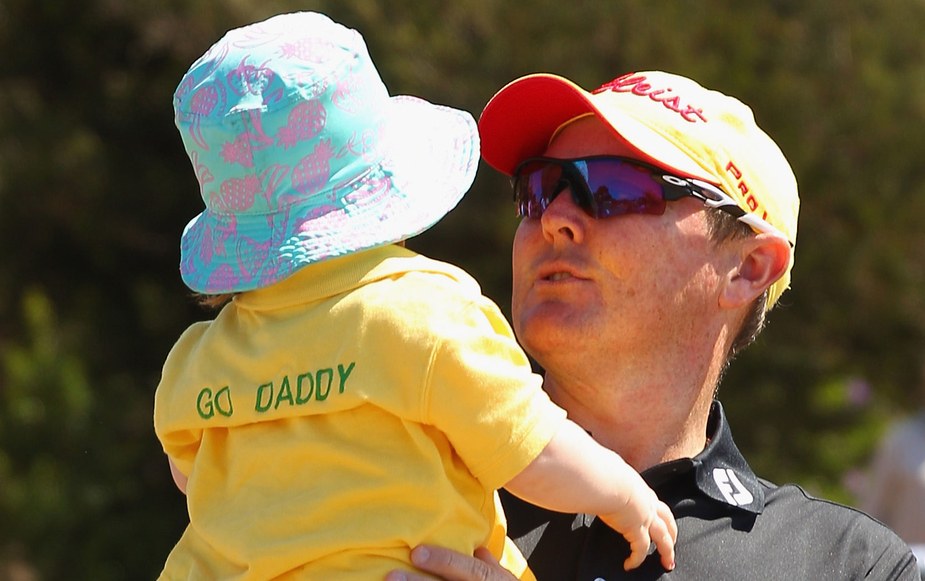
Scott Barbour/Getty Images
No. 14: Jarrod Lyle
Following two successful bouts against leukemia, Jarrod Lyle succumbed to the deadly disease on Aug. 8, passing at age 36. The Australian golfer’s fight came to prominence in 2012, as he stepped away from the PGA Tour during a career campaign when his cancer, which first emerged as a teenager, returned. He mounted a comeback to golf in 2014, and earned the tour’s Courage Award for his perseverance and disposition in the face of adversity. But the leukemia sadly reappeared in late 2017, and though he put up another lionhearted effort, his body could not take anymore. Though he made just 121 career tour starts, Lyle was a popular figure, his wit and affable demeanor making him a locker-room favorite. Players and caddies on tours around the world grieved and honored him, wearing yellow ribbons and “Leuk the Duck” pins Lyle had sported to help raise awareness around childhood cancer. “Jarrod was a true inspiration in the way he faced cancer with a persistently positive attitude,” said PGA Tour commissioner Jay Monahan, “and he carried himself with incredible grace, dignity and courage through the recurrences of this relentless disease.” Lyle is survived by wife Briony and daughters, Lusi, 6, and Jemma, 2. —Joel Beall
[divider] [/divider]

Caryn Levy
No. 15: PGA Tour’s revamped schedule
Next year’s race to the FedEx Cup title reminds one of the film “It’s a Mad, Mad, Mad, Mad World.” It will be that frenetic. But the payoff is better. With golf in the Olympics and the PGA Tour keen to end its season before the NFL begins, commissioner Jay Monahan made good in July on the desire to reconfigure the 46-event schedule for 2019. The PGA Championship will be played in May for the first time in 70 years, which means, starting with the Masters in April, the majors line up on the runway one per month. Meanwhile, the Players Championship is going back to March for the first time since the inception of the FedEx Cup in 2007. The Playoffs have been pared to three events and will end at the reimagined Tour Championship—where the FedEx Cup points leader will get a head start and the winner will claim both titles—on Aug. 25, a full month earlier than this past season. Finding time off will be challenging for the top players, but they shouldn’t mind. The postseason bonus pool doubles to $70 million, with $15 million to the champion. Additionally, the top 10 regular-season finishers share a separate $10 million pool. Mad, indeed. —Dave Shedloski
[divider] [/divider]

Getty Images
No. 16: Everybody’s No. 1
Chalk it up to fierce competition, or perhaps a fallacy in the point system. But the No. 1 ranking in professional golf in 2018 was not so much a crown as it was a hacky sack. The title changed hands nine times in the men’s game between Dustin Johnson, Justin Thomas, Justin Rose and Brooks Koepka this season. Since August alone it’s happened seven times—the most in any previous year was seven in 1997—while each week of November featured a new top dog. Although not occurring at the same frequency, the women’s No. 1 was also a hot potato, with four different players—Shanshan Feng, Inbee Park, Ariya Jutanugarn and Sung-Hyun Park—holding the honor. For the record, the current No. 1s are Koepka and Jutanugarn. In short, don’t expect the records for most consecutive weeks at No. 1—Tiger Woods at 281, Lorena Ochoa with 158—to fall anytime soon. —Joel Beall
[divider] [/divider]
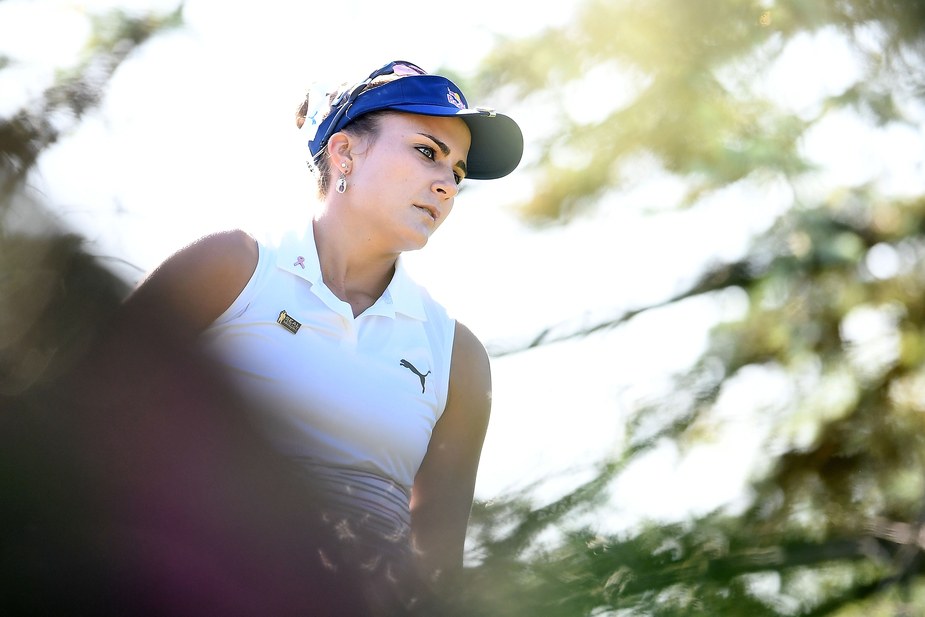
Stacy Revere/Getty Images
No. 17: Lexi Thompson
Lexi Thompson gave an unexpected glimpse into her mind in 2018. The 23-year-old opened up about struggles with body image and spoke about the need to take time away from the game mid-season to maintain her mental health after a tumultuous year and a half on and off the course. But if 2017 was about survival for Thompson, 2018 was about healing and redefinition. After openly facing the struggles within, Thompson crossed paths with another demon during the CME Group Tour Championship in November. A year earlier at Tiburón Golf Club in Naples, Fla., she had missed a two-foot putt and the chance to win the championship and lock up player-of-the-year honors. In 2018, she walked to the 18th green with a big enough lead she could’ve five-putted and it wouldn’t have mattered. By season’s end, Thompson remained the top-ranked American player in the world, sitting on 10 career wins in her still burgeoning career. Yet in 2018, she showed that she isn’t a powerful, golfing machine. She’s a powerful human who plays golf. And accepting her humanity doesn’t negate her ability to dominate. If anything, it may have just made her stronger. —Keely Levins
[divider] [/divider]

Image Studios
No. 18: Distance debate
It’s been said that figures don’t lie but liars can figure. And with the completion of the 2017-’18 PGA Tour season, it’s time to figure out whether it was the former or the latter as it relates to the ramped up debate on distance. What the USGA once described as a “slow creep” in distance exploded in 2018—at least on the PGA Tour. Driving distance leapt from 292.1 yards to 296.1—a four-yard increase. That came after a 2.1-yard jump the year before, a number that caused the USGA and R&A to launch the Distance Insights Project, an 18-month, comprehensive study that will blend data with input from virtually all of the game’s stakeholders, including everyday golfers, via online and telephone surveys. Although some who have participated feel the questions have been biased toward a negative impression of distance, there’s no denying at the elite level that the game’s best have gotten longer. Fourteen players averaged 310 yards or more this past PGA Tour season and 60 topped 300 yards compared to 7 and 40, respectively, the year before. The reason for such increases, however, are still to be determined. USGA CEO Mike Davis stated at the U.S. Open that “one set of rules is very important to the game long term,” seemingly inhibiting the possibility of rules bifurcation. How things will play out, then, remains unclear. What is known is this: the discussion itself will undoubtedly remain spirited. —E. Michael Johnson
[divider] [/divider]
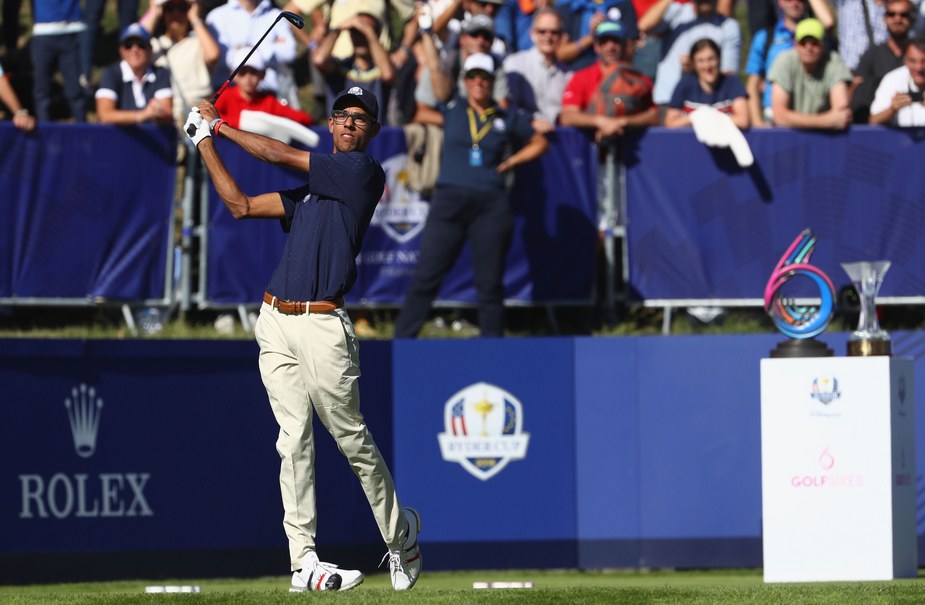
Jamie Squire/Getty Images
No. 19: Akshay Bhatia
Akshay Bhatia found plenty of ways to win junior tournaments in 2018. The 16-year-old from Wake Forest, N.C., won despite being penalized for using a rangefinder (Junior Invitational at Sage Valley). He won from out front (Polo Golf Junior Classic by 10 strokes). He won from behind (Junior PGA Championship, with a chip in for eagle on the last hole that went viral). He won as part of Team USA (Junior Ryder Cup in Paris). It all turned the lanky lefty (6-foot, 125 pounds) into a junior phenomenon with more buzz than any boy since the high school days of Jordan Spieth. Interestingly, the highlight of 2018 was a tournament the AJGA Rolex Player of the Year didn’t win. “Getting to the finals of the U.S. Junior was a huge learning point this year for me,” says Bhatia, where he fell to good friend Michael Thorbjornsen, 1 up. “It was definitely depressing because you play great golf for I think more than 100 holes and then you just fall one shot short. That’s hard to swallow. But it motivates me for next year.” As does becoming the first American still in high school to make the U.S. Walker Cup team in 2019. —Ryan Herrington
[divider] [/divider]

Tim Clayton/Corbis via Getty Images
No. 20: Backstopping
Backstopping as a routine isn’t entirely new on the PGA Tour, but it became more out in the open in the fall of 2017. That’s when Justin Thomas confessed his right to play faster even if it means taking advantage of a ball near the hole and not waiting for it to be marked. The previously little-spoken occurrence gained more attention in June when Jimmy Walker found himself at the center of a firestorm after saying, “If you don’t like a guy you will mark anyway. If you like the guy you might leave it to help on a shot. Some guys don’t want to give help at all and rush to mark their ball. To each his own.” Fellow tour pros—Jason Day, Dustin Johnson and Luke Donald among them—took issue (rightfully so) with Walker’s stance. The most notable examples of the practice took place at the 2017-’18 season opener when Tony Finau hit a greenside bunker shot from a plugged lie as playing partner Jason Kokrak didn’t mark his ball that was next to the hole. At this year’s U.S. Open at Shinnecock Hills, there was a similar situation involving Thomas and Brian Harman. The latter led to Paul Azinger blasting the idea of helping a fellow competitor—and in turn hurting the rest of the field. There have been other occurrences as well. But given the genial relationships between many of today’s young players, and with no rule in place for something that is almost entirely intent-based, don’t expect this controversy to die down anytime soon. —Brian Wacker
[divider] [/divider]

Montana Pritchard/The PGA of America via Getty Images
No. 21: Pete Bevacqua
A golf executive switching from one big organization to another doesn’t always register with the general public, but Pete Bevacqua’s impact on the game has been bigger than most. The PGA of America CEO announced in July he would be taking a new position as president of NBC Sports Group, but only after presiding over several bold moves during his PGA tenure. In moving the PGA Championship from August to May, Bevacqua was giving the so-called fourth major a chance at a new identity. He helped secure a lucrative future for the Ryder Cup by establishing a 15-year rights deal between the PGA and NBC Sports, and set in motion a lucrative deal to move the PGA of America headquarters from South Florida to Texas. All were efforts to distinguish the PGA of America from the PGA Tour, two easy-to-confuse golf bodies with distinct missions. Bevacqua didn’t see all of those efforts come to their finish—the first May PGA is not until 2019, and the move to Texas is pending local approval—but if there’s a reason NBC wanted the charismatic Bevacqua on its team, it’s because of a proven ability to get big ideas off the ground. —Sam Weinman

No. 22: Tiger Woods biography
The ambitious biography, Tiger Woods, by Jeff Benedict and Armen Keteyian, delivered its share of juicy nuggets regarding the 14-time major champion—notably about his infamous sex scandal, his father’s infidelities and the particulars behind his decision to turn professional. But really what set this 512-page tome apart from the countless other profiles of Woods is how it created a three-dimensional picture of Woods’ curious existence—how he became arguably the greatest golfer of all time, but also someone who felt increasingly isolated at the height of his stardom. Of course there were elements of the book that Woods’ camp didn’t like—they cited a few small factual errors. Yet the book’s impact wasn’t so much in what it said, but in convincingly explaining why Woods ended up the way he did. —Sam Weinman

Stuart Franklin/Getty Images
No. 23: Shubhankar Sharma
Shubhankar Sharma’s first true introduction to golf fans on the world stage involved an actual—and awkward—introduction with one of his heroes back in March. Sharma, the surprising 36-hole leader at the WGC-Mexico Championship, approached Phil Mickelson on the practice green before the third round and was initially blown off by the five-time major champ, who mistook him for a member of the media. Mickelson wound up winning that week, but Sharma was the event’s breakout star with a performance that helped him earn a Masters invite two days later, making him just the fourth Indian golfer to tee it up at Augusta National. By year’s end, Sharma had collected the European Tour’s rookie-of-the-year award for a two-win campaign and finished 28th in the Race to Dubai. During the Open Championship, Sharma was surprisingly serenaded by a packed restaurant in Carnoustie for his 22nd birthday. Expect even more people to know who he is in 2019. —Alex Myers

Getty Images
No. 24: Joel Dahmen/Sung Kang
Cheating is golf’s biggest taboo. It engenders a code of omerta, a cognizance of the scarlet letter that comes with the slightest assertion. It all made Joel Dahmen’s accusation that fellow competitor Sung Kang had knowingly broken the rules at the Quicken Loans National in July the talk of the tournament. Kang, Dahmen’s final-round playing partner, found a hazard at TPC Potomac’s 10th hole. Kang believed his ball passed over the stakes; Dahmen disputed the account, alleging Kang failed to cross the water. The argument continued so long that the group behind played through. Though a rules official eventually sided with Kang—whose T-3 finish earned an Open Championship invite—Dahmen, 31, remained steadfast, taking to Twitter to air his grievance: “Kang cheated. He took a bad drop from a hazard. I argued until I was blue. I lost.” Speaking at Carnoustie, Kang defended his actions. “I did the right thing,” the 31-year-old from South Korea insisted. One silver lining from the thorny incident: Dahmen, a career journeyman, seemed galvanized by the matter, reeling off four consecutive top-15s to keep his card for 2019. As did Kang. —Joel Beall

Robert Laberge/Getty Images
No. 25: Bernhard Langer
Bernhard Langer, such is his consistency and resistance to aging, has turned the PGA Tour Champions season into an endless loop. For the fourth time in the last five years (and the fifth time overall), the World Golf Hall of Famer won the season-long Charles Schwab Cup and its $1 million bonus. His 14 top-10s led the tour for the seventh straight year. His earnings ($2,222,154) also led the tour for a seventh straight year. In those seven years, he’s led the tour in scoring average four times, and finished second three times, including this year. At 61, he is spotting the competition as many as 11 years in age, and is still dominating. His 38 career senior wins are seven shy of Hale Irwin’s all-time record, which seems distant, if it weren’t Langer doing the chasing. The one honour that Langer walked away with in 2018 for the first time? The PGA Tour’s Payne Stewart Award for quality of character and philanthropy. —John Strege

